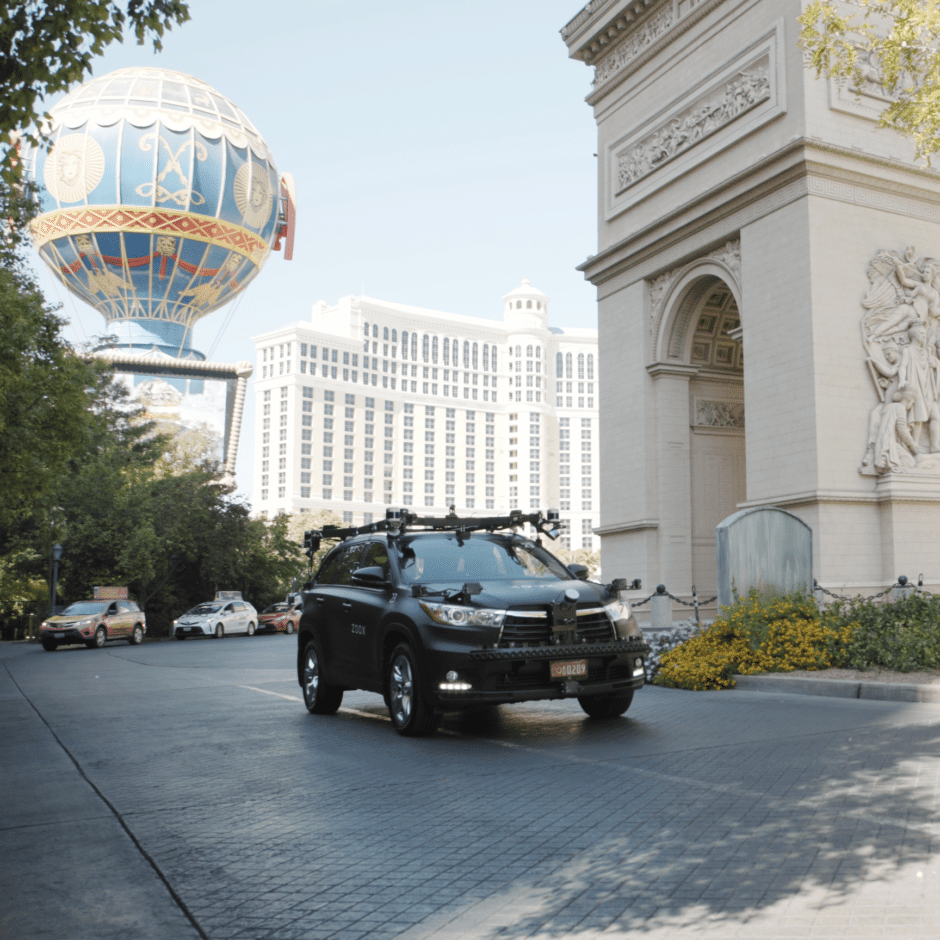Ablock from San Francisco’s Embarcadero waterfront is a place you’re not supposed to notice. The little two-story building has no sign out front. Not even a street number affixed to its gray brick walls. Every window and door contains shaded glass, and a black, razor-wire-topped fence obscures its parking lot.Welcome to the San Francisco testing site of Zoox, one of the most secretive startups in the booming world of autonomous driving.
If you’re fortunate enough to get inside, one of the first things you see in the lobby is a flat-panel TV. It’s playing what look like clips from a videogame. They are, in fact, the simulations used to train Zoox’s robo-taxis to handle unexpected road conditions. All the videos are from the perspective of a front-seat passenger and never show the actual Zoox vehicle—the design of which is more closely guarded by the startup than many U.S. government secrets.
“People will get to see it in 2020,” says Zoox cofounder Tim Kentley-Klay in his quiet Australian accent. “That’s all I can say for now.”
Kentley-Klay, 43, is an improbable entrant into the crowded race to develop self-driving cars. He has no engineering degree, no background in computer science. Through his early 30s, he was a successful artist and designer—creating music videos and ads for major companies like McDonald’s and Birds Eye frozen vegetables. Then, in 2013, he began to develop a very bold idea: build, own and operate a fleet of specially designed, autonomous taxis and an accompanying app. Kentley-Klay envisions an automobile that offers an unbeatable ride—stripping away every part of a vehicle that isn’t essential for a passenger, like steering wheels and brake pedals—that can stay on the road longer than a typical taxi.
From the beginning, Zoox has faced immense challenges. It must contend with all the problems of a carmaker and a taxi operator—while trying to develop a totally new type of automobile. And Zoox’s competitors are some of the biggest companies in the world. Waymo, the Google spin-off, and GM are years ahead of it. Waymo actually expects to start banking revenue from its driverless taxis this year, and GM says its version could be on the road by 2019. The list of rivals just goes on from there—Baidu, Uber, Ford, Nissan, Tesla.Then there’s a matter of simple arithmetic. “No matter how good [Zoox’s] tech is, if they’re wedded to building this vehicle they’ve designed, that’s going to be incredibly capital-intensive,” says Mike Ramsey, a Gartner analyst who focuses on self-driving tech. So far Zoox has raised about $360 million from investors including Sand Hill Road luminary DFJ and billionaire moviemaker Thomas Tull. (Its biggest round, in 2016, pushed Zoox’s valuation past the ten-figure mark to $1.7 billion.) Realistically, the startup will need several billion dollars more. “There are many more reasons why Zoox can fail than succeed,” admits Lux Capital partner Shahin Farshchi, who’s backed Zoox since 2015. “But I felt convinced that if Zoox overcomes these huge obstacles, we would be early investors in a once-in-a-generation company.”
To continue reading, please access the full article here.

